The Psoas Defined, Explained, and Explored in 6 Yoga Poses
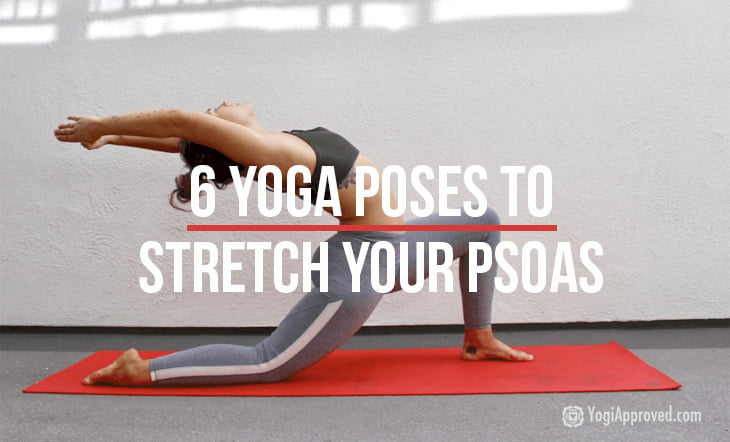
The slightly mystical psoas major muscle is often overlooked or even unknown when we talk about our muscular anatomy. You might hear your yoga teacher reference it in a yoga class from time to time, but many of us don’t know what it is, where it is, or the major role it plays.
Did you know the psoas plays a very vital role in our physical and mental health? When we become aware of the powerful psoas muscle and how to get the most from it, we can change our body.
“The psoas is an organ of perception composed of bio intelligent tissue and embodies our deepest urge for survival and our desire to flourish.” -Liz Koch
The psoas muscle is responsible for not only creating stability in our body, but with openness, connection and our need for survival as well. The psoas is the deepest muscle in the human body and therefore the hardest to stretch and strengthen. We can experience amazing benefits when we continuously work the psoas in our physical body, but the mental benefits are just as rewarding.
Read on for a full overview of this powerful muscle as we define, explain and explore the psoas in six yoga poses.
Looking for a Practice to Open Up Your Hips?
In this slow and powerful practice on YA Classes, you will focus mainly on the hips, heart, and hamstrings opening the body through repetitive movement exercises, upper body twists, and holding postures. Not yet a YA Classes member? Try it out for free for 14 days.
Let’s Talk About the Psoas
According to international yoga teacher Liz Koch, the psoas is more than a stabilizing muscle, “It is an organ of perception composed of bio intelligent tissue and embodies our deepest urge for survival and our desire to flourish.” Since the psoas is the deepest muscle in the human body, it makes sense that this is where our body stores our need for connection, survival, and love.
Where is the psoas located?
The psoas major is located from the middle of the spine (T12) to the top of the thigh bone. It attaches from the very bottom of the rib cage, and continues down your body, through the core, and attaches to very top of the thigh bone. The psoas is the only muscle that connects the spine to the legs.
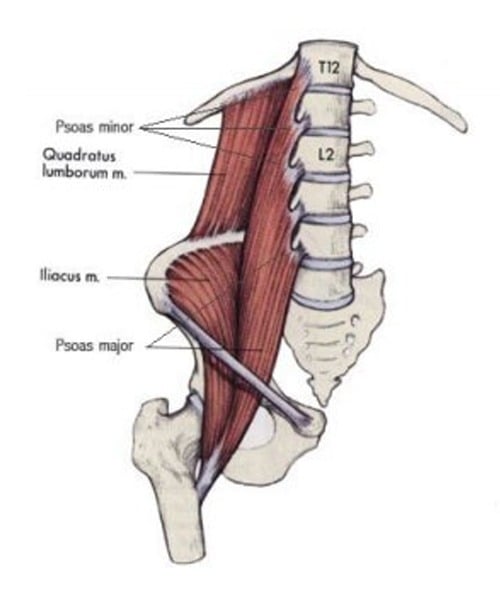
What is so bad about a tight psoas?
The psoas is also connected to our diaphragm, so a tight psoas can affect your breathing. When your breath is constricted, your brain will then activate your sympathetic nervous system – your fight or flight response. The resulting continuous stress and constant running on adrenaline can slowly begin to break down your mind and body.
The psoas is the deepest muscle in the human body and therefore the hardest to stretch and strengthen.
Emotions such as fear, anxiety, stress or sadness will cause our psoas to tighten. A tight psoas can easily lead to low back pain, shortness of breath, and kick start our sympathetic nervous system into overdrive. An overactive sympathetic nervous system can also lead to weight gain, depression and fatigue.
Who would’ve thought one tight muscle could cause so many problems? Luckily, we have yoga poses to help target our deep psoas muscle to keep our minds and bodies healthy and happy.
Here Are 6 Yoga Poses to Stretch Your Psoas and Keep Your Mind and Body Healthy:
1. Supta Virasana (Reclining Hero’s Pose)
Supta Virasana lengthens the entire front side of the body and allows the practitioner to feel a deep stretch along the outer sides of the torso. Supta Virasana is also an effective way to gently stretch the knees, ankle joints and psoas muscle.

Let’s try it:
- Sit in between your heels (or on a block) with your knees hip-width distance apart
- This can be an intense stretch, so feel free to remain here
- If you would like to add intensity, place your hands behind your hips. Move slowly to protect your knees
- For most people, this stretch will be enough. If your knees and ankles are more open, you can bring your knees closer together, and/or recline onto the mat for a more intense stretch
- If your knees lift off the mat, then back out of the pose
- Remain here for a few breaths and consciously send your breath to your hip flexors to invite them to fully relax
2. Anjaneyasana (Crescent Lunge or Low Lunge)
Anjaneyasana gives an amazing stretch to the psoas, the front of the hip, the bottom of the knee, and also invites a heart-opening backbend. Opening your heart along with the psoas releases loving energy throughout your body, which makes you feel more energized and free.
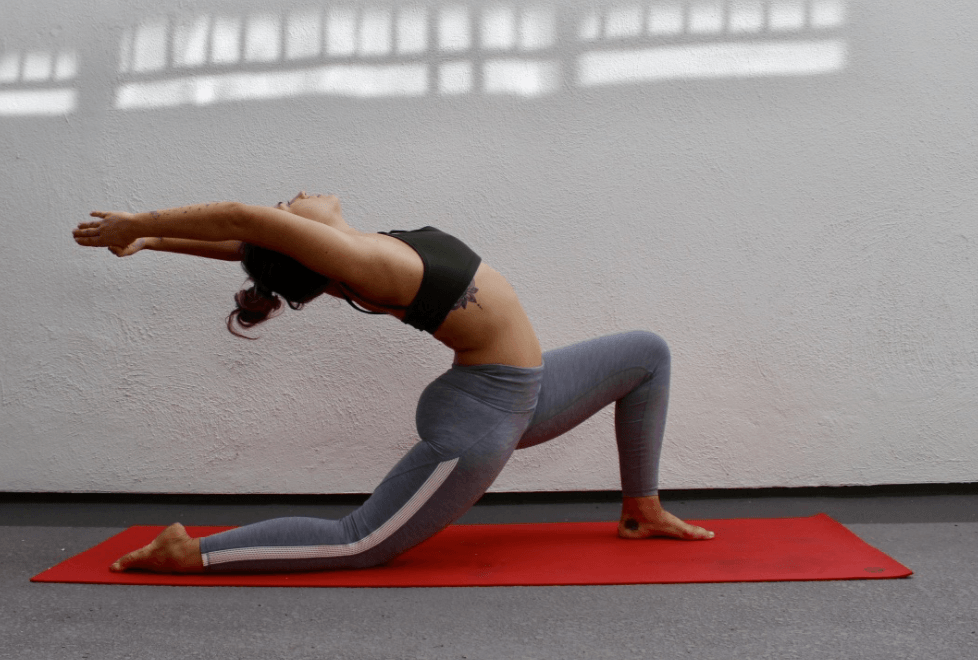
Let’s try it:
- Begin in Downward Facing Dog and step the right foot between your hands, then lower your back left knee to the mat
- Be sure your right knee is stacked above your right ankle
- Bring your palms to your right thigh or lift both arms toward the sky
- Notice the stretch in your left hip and breathe into that space
- If your body allows you to, lean your hips toward your front foot to add a more intense stretch
- For an even deeper stretch, interlace your hands behind your back and take a gentle backbend
- Hold for a few breaths and repeat on the other side
Looking for more yoga tutorials and yoga tips? Check out our full library of Yoga articles here
3. Utthan Pristhasana (Lizard Pose)
Lizard Pose not only opens the lower part of the psoas, but also builds strength in the arms and hamstrings. Be sure to keep your heart open and your chest reaching forward to keep your spine long, core active, and the energy within your body moving.
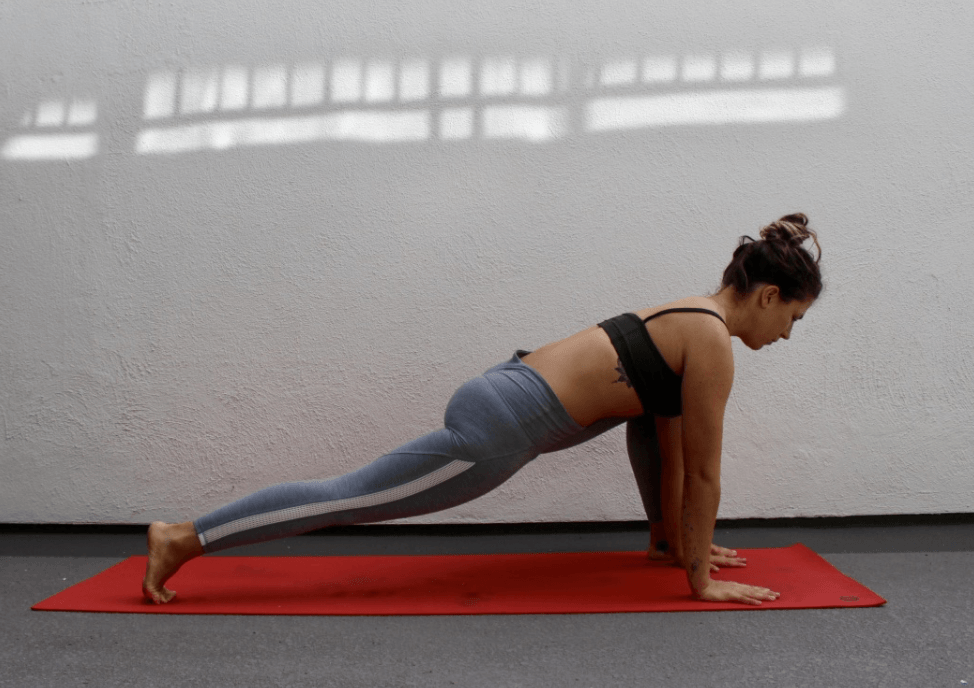
Let’s try it:
- Begin in a Low Lunge with the right foot forward and the left knee off the mat
- Slowly walk your right foot to the right edge of your mat and bring both hands to the inside of your front foot
- Activate your left foot and hamstring to keep the left knee lifted
- Keep your chest reaching forward
- I recommend staying on your hands so you can keep reaching forward with the chest. Some prefer to lower to their forearms to deepen the stretch
- Breathe into the left hip flexor to help lengthen the psoas
- Remain for a few breaths, then switch sides
4. Utthan Pristhasana Variation (Revolved Lizard with Quadricep Stretch)
This variation of Revolved Lizard not only continues to open the front of the hip, but the quadricep and psoas as well. This Revolved Lizard also gives the body a great detoxifying twist when held for 5-10 deep breaths.
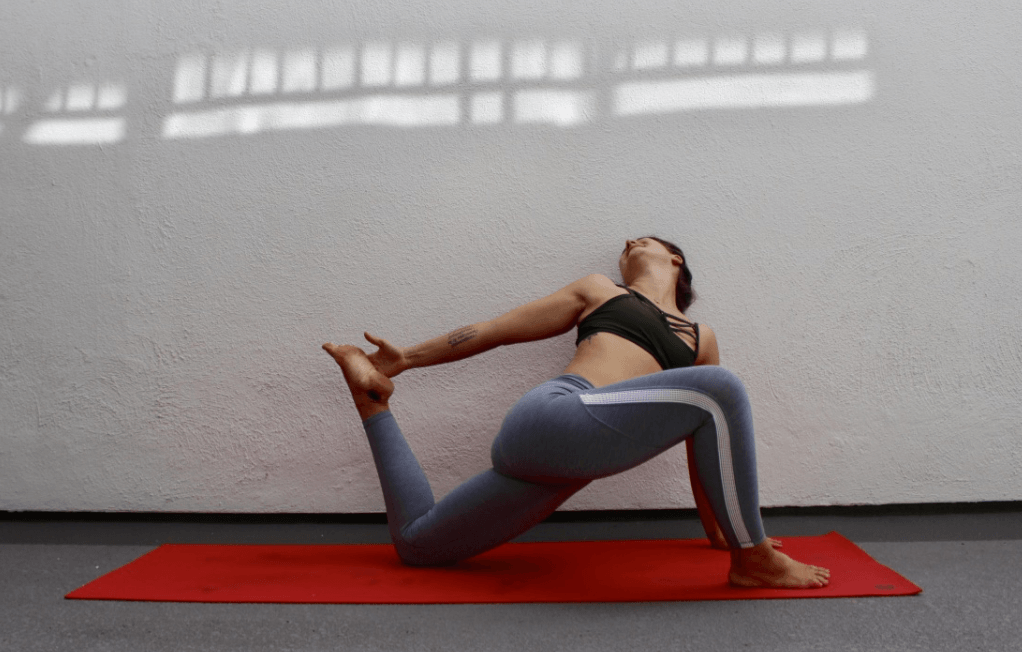
Let’s try it:
- Begin in Lizard Pose with the right foot forward and release the left knee to the mat
- Place your left hand on the mat or on a block inside your right foot
- Reach back with the right hand (feel free to use a strap if needed) to grab the outside of the left foot
- Once you grip your foot, slowly invite a deeper quadricep stretch by bringing your left foot closer to your glute
- Inhale and extend your spine, then exhale for a deeper twist
- Option to lower onto your left forearm for a more intense stretch
- Hold for a few breaths and switch sides
5. Ustrasana (Camel Pose)
Ustrasana is a deep backbend that invites a great stretch for the front body, including the psoas. Ustrasana can bring up many emotions including anxiety, fear and aggression, but don’t fight the awakened emotions. Instead, allow it to surface so it can be released. Energetically, Ustrasana helps heal our past to invite compassion and love into the present.
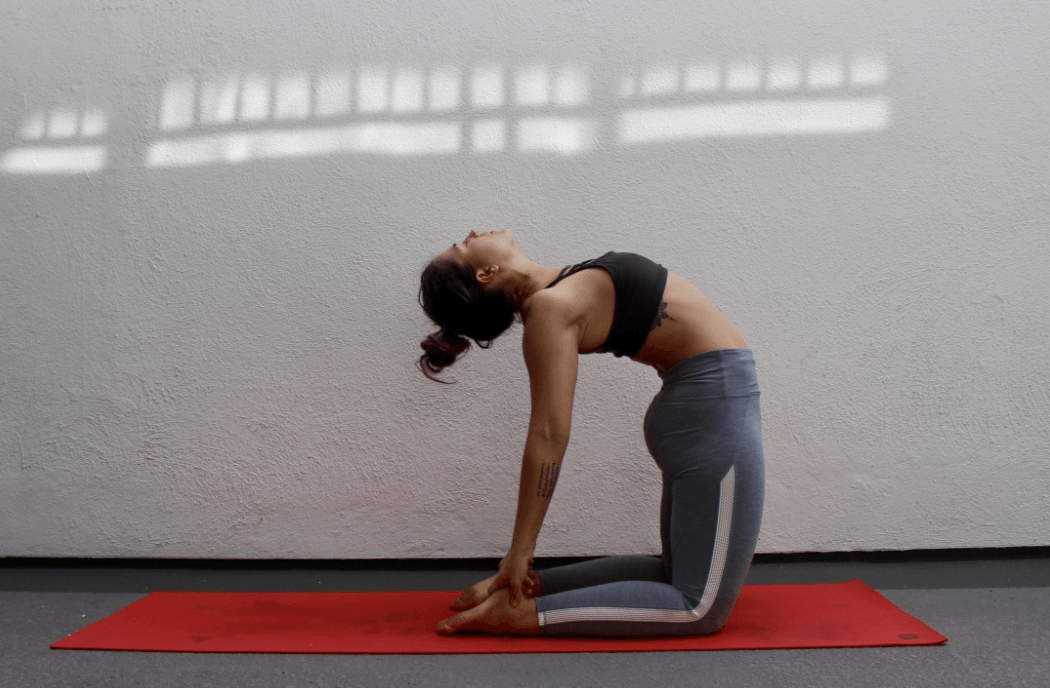
Let’s try it:
- Come onto your knees and bring them hip-width distance apart
- Tuck your toes so your heels face skyward
- Place your hands (fingers facing down) on your low spine for support and to help your spine stay long
- Inhale and lift your chest to lengthen your spine
- Exhale and slowly press your hips forward as you begin to bend back
- Be sure you keep your lower back safe by focusing the extension on your thoracic spine
- Visualize your chest reaching up and over an imaginary fence behind you
- Keep your hands on your low back for support, or when you have reached your edge, option to place the hands on blocks next to your feet or reach for your ankles for a more intense variation
- Hold for a few breaths, then use your core to come back to center
6. Urdhva Dhanurasana (Upward Facing Bow Pose or Wheel Pose)
Urdhva Dhanurasana not only opens our heart, psoas and hips – it also builds strength in our arms, glutes and legs. Urdhva Dhanurasana is a great stretch for our wrists and allows our heads to drop below our hearts.
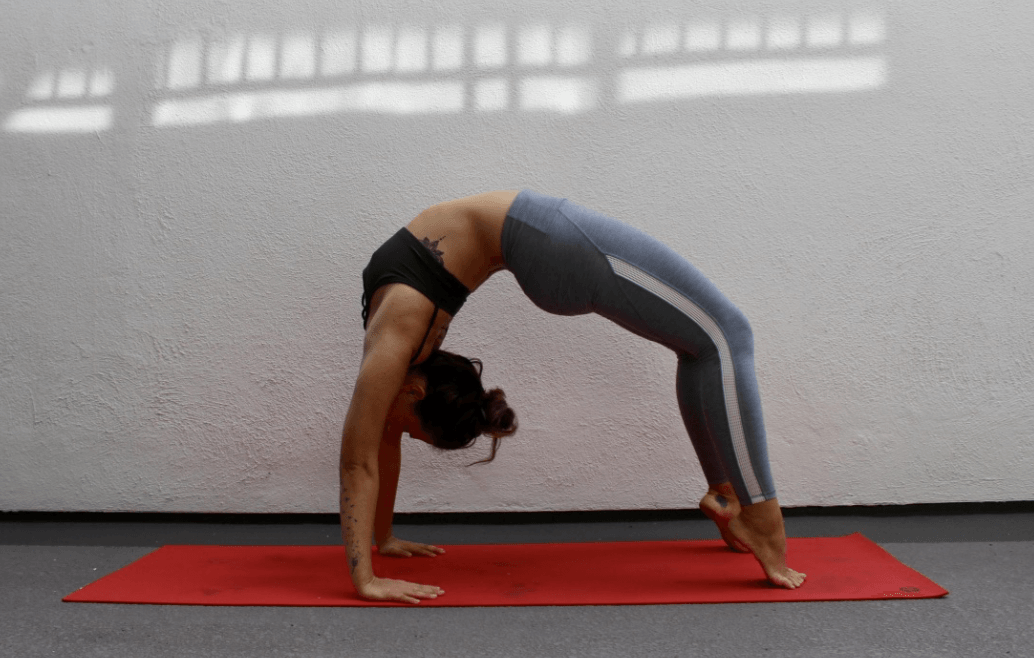
Let’s try it:
- Begin on your back with your knees bent and your feet planted hip-width distance apart
- Place your palms under your shoulders with your fingers facing your heels
- Press into your hands and feet and place the crown of your head on the mat
- Reestablish your arm alignment by hugging the outer arms in and squeezing the elbows closer together
- When aligned, push into all four limbs while hugging the outer arms in toward the center of your body
- Keep your thighs internally rotated to keep the stretch on top of your legs and not your outer hips
- Do not allow your feet to turn outward or your knees to open wider than your hips
- Work towards pressing your chest back towards your wrists to open your shoulders and chest
- Hold for a few breaths, and slowly release onto the mat when you’re ready
The Takeaway on The Psoas
Lengthening the psoas muscle invites the movement of prana in your body to help calm your mind and body. Consistently strengthening and lengthening the psoas will help relieve tension, back pain, digestive issues, manage a healthy weight and help you feel grounded.
Spend some time getting to know the psoas muscle and all of the valuable ways it can help you feel physically amazing and emotionally secure.


This Month's Letter
From the Editor
Monthly motivation and food for
thought from our founder.


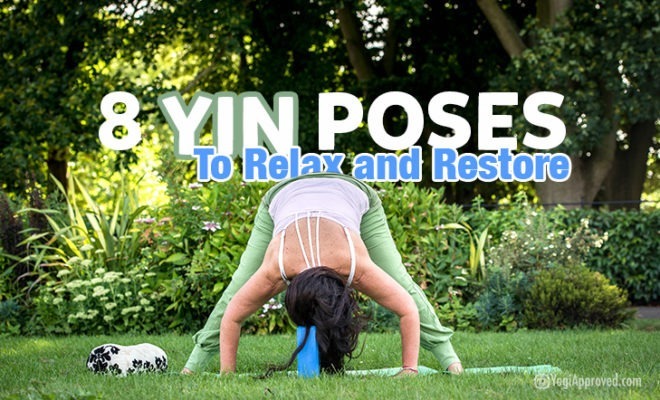
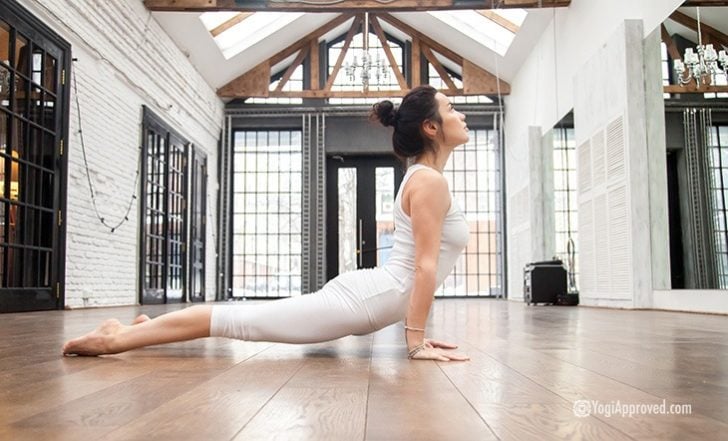
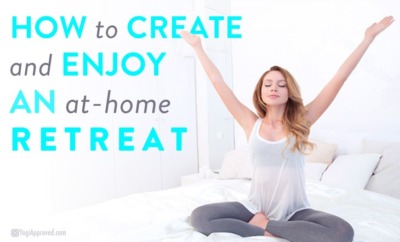

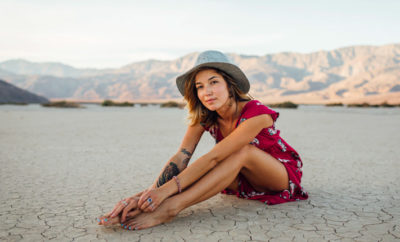

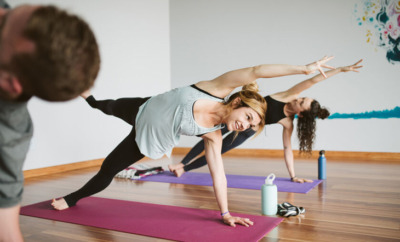
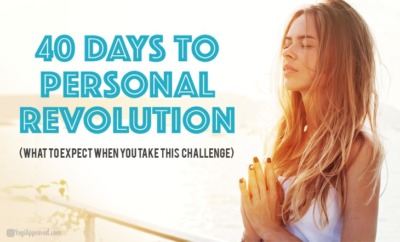



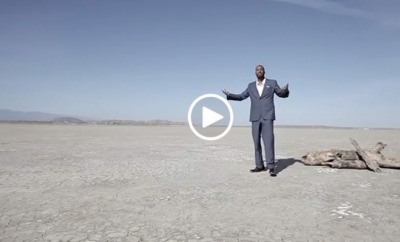


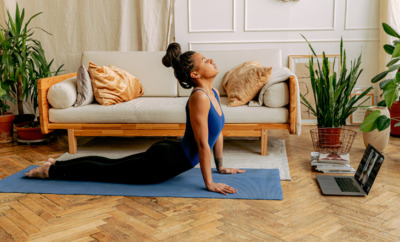















Comments